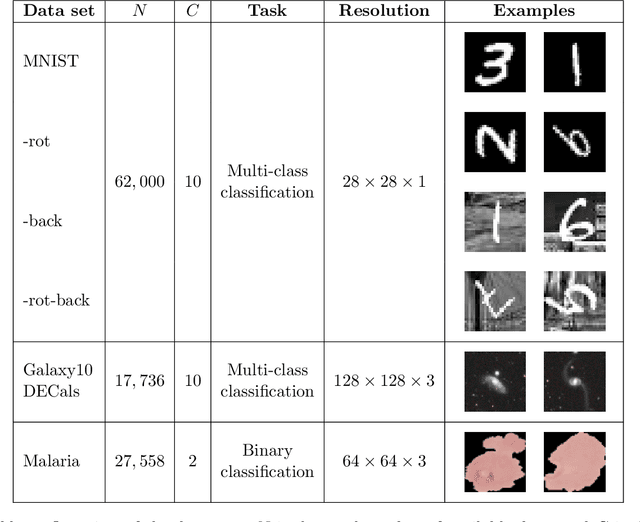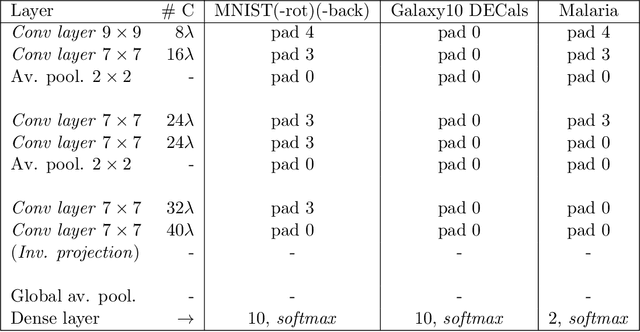Alexandre Mayer
Towards Photonic Band Diagram Generation with Transformer-Latent Diffusion Models
Oct 02, 2025Abstract:Photonic crystals enable fine control over light propagation at the nanoscale, and thus play a central role in the development of photonic and quantum technologies. Photonic band diagrams (BDs) are a key tool to investigate light propagation into such inhomogeneous structured materials. However, computing BDs requires solving Maxwell's equations across many configurations, making it numerically expensive, especially when embedded in optimization loops for inverse design techniques, for example. To address this challenge, we introduce the first approach for BD generation based on diffusion models, with the capacity to later generalize and scale to arbitrary three dimensional structures. Our method couples a transformer encoder, which extracts contextual embeddings from the input structure, with a latent diffusion model to generate the corresponding BD. In addition, we provide insights into why transformers and diffusion models are well suited to capture the complex interference and scattering phenomena inherent to photonics, paving the way for new surrogate modeling strategies in this domain.
Photonic Structures Optimization Using Highly Data-Efficient Deep Learning: Application To Nanofin And Annular Groove Phase Masks
Sep 05, 2023Abstract:Metasurfaces offer a flexible framework for the manipulation of light properties in the realm of thin film optics. Specifically, the polarization of light can be effectively controlled through the use of thin phase plates. This study aims to introduce a surrogate optimization framework for these devices. The framework is applied to develop two kinds of vortex phase masks (VPMs) tailored for application in astronomical high-contrast imaging. Computational intelligence techniques are exploited to optimize the geometric features of these devices. The large design space and computational limitations necessitate the use of surrogate models like partial least squares Kriging, radial basis functions, or neural networks. However, we demonstrate the inadequacy of these methods in modeling the performance of VPMs. To address the shortcomings of these methods, a data-efficient evolutionary optimization setup using a deep neural network as a highly accurate and efficient surrogate model is proposed. The optimization process in this study employs a robust particle swarm evolutionary optimization scheme, which operates on explicit geometric parameters of the photonic device. Through this approach, optimal designs are developed for two design candidates. In the most complex case, evolutionary optimization enables optimization of the design that would otherwise be impractical (requiring too much simulations). In both cases, the surrogate model improves the reliability and efficiency of the procedure, effectively reducing the required number of simulations by up to 75% compared to conventional optimization techniques.
SO and O Equivariance in Image Recognition with Bessel-Convolutional Neural Networks
Apr 18, 2023



Abstract:For many years, it has been shown how much exploiting equivariances can be beneficial when solving image analysis tasks. For example, the superiority of convolutional neural networks (CNNs) compared to dense networks mainly comes from an elegant exploitation of the translation equivariance. Patterns can appear at arbitrary positions and convolutions take this into account to achieve translation invariant operations through weight sharing. Nevertheless, images often involve other symmetries that can also be exploited. It is the case of rotations and reflections that have drawn particular attention and led to the development of multiple equivariant CNN architectures. Among all these methods, Bessel-convolutional neural networks (B-CNNs) exploit a particular decomposition based on Bessel functions to modify the key operation between images and filters and make it by design equivariant to all the continuous set of planar rotations. In this work, the mathematical developments of B-CNNs are presented along with several improvements, including the incorporation of reflection and multi-scale equivariances. Extensive study is carried out to assess the performances of B-CNNs compared to other methods. Finally, we emphasize the theoretical advantages of B-CNNs by giving more insights and in-depth mathematical details.
 Add to Chrome
Add to Chrome Add to Firefox
Add to Firefox Add to Edge
Add to Edge